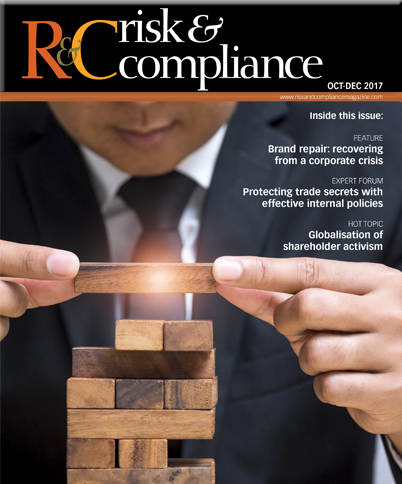BRAND REPAIR: RECOVERING FROM A CORPORATE CRISIS
“Crisis? What crisis?” These are the words that once helped bring down a UK government – an infamous example of a head in the sand approach to managing a crisis and all it entails.
Although the infamy alluded to took place within the political world, its identification as an example of how not to react to a crisis is equally applicable elsewhere, particularly in a corporate environment. When the dust has settled on a corporate crisis, whatever its origin, the aftermath – both immediate and longer term – is likely to include severe operational, financial and reputational damage for the entity caught up in the storm.
“There are three questions stakeholders will want answered: what happened, what you are doing about it and how you are going to keep it from happening again,” says Erik Bernstein, vice president at Bernstein Crisis Management. “Until you have answered those you cannot move forward. The major factors driving the rehabilitation process are rebuilding trust, bringing operations back to ‘normal’ and navigating the court of public opinion.”
According to reputation management adviser Deon Binneman, the ultimate objective is to protect the reputation and integrity of the company at all costs. To do this, management needs to understand that: (i) bad things happen to good companies and an effective response to a crisis is key; (ii) companies have to deal with the reality of the crisis and the perceptions created during it; (iii) decision making will need to carefully consider the art and science of apologies; (iv) a crisis will test the DNA of the company, what it stands for and believes; (v) it is crucial to be prepared for a loss of control in a crisis, such as a media and social media storm; and (vi) decisions by stakeholders are invariably based on trust, with good reputations being built on good actions and policies that earn stakeholder trust.

